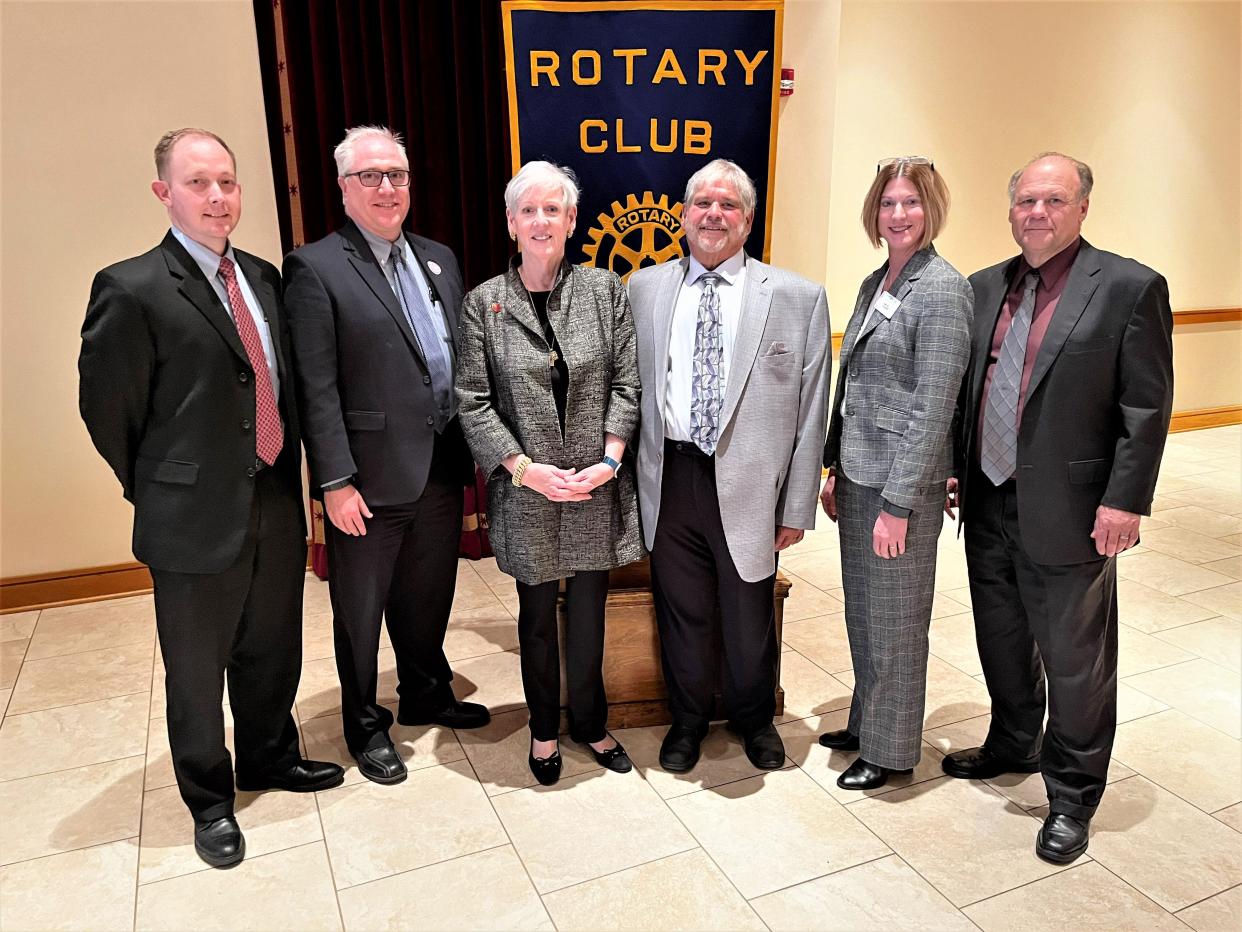Law Day: Retired Ohio chief justice weighs in on redistricting, HJR1

Even in retirement, former Ohio Supreme Court Chief Justice Maureen O’Connor said she is continuing to work on issues she undertook during her final term in office, including redistricting for congressional and general assembly elections.
O’Connor was the keynote speaker for the Marion Rotary Club’s annual Law Day observance on Tuesday at the May Pavilion. She retired from the Supreme Court at the end of her term in 2022.
During her last term on the Supreme Court, O’Connor was at the forefront of the debate about redistricting for congressional and Ohio General Assembly elections. She was part of a majority of state Supreme Court justices who declared a series of maps unconstitutional. In doing so, she broke ranks with fellow Republicans who comprised the majority of the members of the state’s redistricting commission.
Despite the Ohio Supreme Court ruling, a federal court allowed the state to use one of the maps that was declared unconstitutional to be used for the 2022 election.
The redistricting commission is comprised of elected office-holders − governor, auditor of state, secretary of state, two state senators, and two state representatives. Five of the seven members are Republicans with two Democrats.
O’Connor said she has joined a group dedicated to reforming the redistricting commission in Ohio and remove the influence of politics from the process of drawing maps.
“We need to have a redistricting commission that’s not made up of politicians; it’s made up of citizens,” O’Connor said. “Hearken back to We the People. Let’s embrace that. When we talk about voting, we utilize the sensibilities of We the People and not have it governed by the politics. Again, both (Democrats) and (Republicans) usher in politics to what they do in their role. The majority of Ohioans are not looking for that.”
O’Connor said she is working with “a statewide collaboration and bringing national experts together who don’t have a dog in the fight” with the goal of drafting a constitutional amendment to reform redistricting that would include the creation of a non-partisan commission with no elected officials among its membership.
“They’re not politicians. There’s conservatives, independents, what would probably be considered progressives,” she said. “It’s just a variety of people at the table trying to hash out what would be the best plan to come up with a constitutional amendment and put that before the voters of Ohio, and let the voters of Ohio speak on what they want their redistricting commission to look like.
“The number one recommendation is to have the average citizen – of course there would be qualifying criteria – sit on the redistricting commission. And then a random selection from the people who have met those qualifications, so that would ensure that there are no politics involved in how the lines (for district maps) are drawn.”
O’Connor said the group she is part of is aiming to place an amendment on the statewide ballot in time for the November 2024 general election.
The former chief justice stated that she is concerned about a movement in the Ohio General Assembly to change the requirements for amending the state constitution. House Joint Resolution 1, drafted earlier this year by Republican state lawmakers, would change the percentage needed to amend the Ohio constitution by a statewide ballot initiative to a supermajority of 60% from the current simple majority of 50% plus 1.
O’Connor said she and others of various political backgrounds view the plan as problematic.
“Many, many people on both sides of the aisle see that as being a problem, that we’re taking something away from the voters of Ohio that has been in place for 212 years, and that’s majority rules,” she explained. “There is no rationale for that. Former Gov. (Bob) Taft, former Gov. (John) Kasich, former Gov. (Ted) Strickland, and former Gov. (Dick) Celeste all came together to talk about this and spoke with one voice about what the consequences for the State of Ohio would be.”
She noted that if a 60% threshold had previously been in existence, numerous important amendments would’ve failed, including home rule, civil service reform, the Clean Ohio Fund, Third Frontier Project, and various bond issues to support economic development, conservation, and housing.
“The shifting of the goal post, so to speak, is not something that I think that is conducive to democracy,” O’Connor said. “It’s certainly not conducive to the heritage of the State of Ohio. And there is mounting opposition to (House Joint Resolution 1).”
The Ohio Senate has voted in favor of HJR1. The House has until May 10 to vote on the measure. If approved, it could appear on a special election ballot in August, but whether that election happens is still being debated in the General Assembly.
Email: ecarter@gannett.com | Twitter: @AndrewACCarter
This article originally appeared on Marion Star: Retired Ohio chief justice weighs in on redistricting, HJR1

